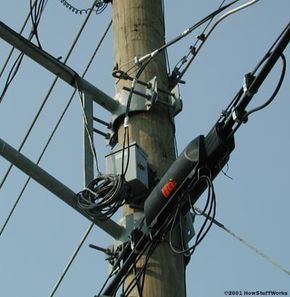Running the Red Light
As we saw in the previous section, a red-light-camera system is controlled by a computer. To see how these computers bring everything together, let's look at a typical intersection and a typical traffic violation.
For simplicity's sake, we'll only consider traffic moving in one direction through this intersection. When the light is green or yellow for incoming traffic, the computer ignores the triggers and does not activate the cameras. The system doesn't "turn on" until it receives a signal that the light is red. If you're already in the middle of the intersection when the light turns red, the system will not activate the cameras (this is not a traffic violation in most areas). Some systems wait a fraction of a second after the light turns red, to give drivers a "grace period."
Advertisement
In most systems, the computer will not activate the cameras if a car is just sitting over the induction loops. To trigger the cameras, you have to move over the loops at a particular speed. In most systems, there are two loop triggers for each lane of traffic. When the triggers are both activated in quick succession, the computer knows a car has moved into the intersection at high speed. If there is more of a delay, the computer knows the car is moving more slowly. If the car activates only the first trigger, the computer knows it is stopped at the edge of the intersection.
When a car activates both triggers after the light is red, the computer automatically takes a picture. This first shot shows the car just as it is entering the intersection. The computer then hesitates briefly and takes another shot. This catches the car in the middle of the intersection. The computer calculates the length of the delay based on the measured speed of the car. It's important to get two pictures of the car to show that it entered the intersection when the light was red and then proceeded through the intersection.
To fully document the violation, the computer superimposes some extra information on these two photos. It includes:
- The date
- The time
- The intersection location
- The speed of the car
- The elapsed time between when the light turned red and the car entered the intersection

With all of the information superimposed on the picture, along with photos of the infraction, the police have everything they need to charge the driver. In most areas, the police, or a private firm hired to maintain the system, simply look up the license plate and send the ticket in the mail. The driver (or car owner) can pay the fine through the mail and be done with it or he or she can try to contest the ticket in court. Of course, the police send the photos along with the ticket, so most drivers end up just paying the fine.
Red-light cameras have been around for more than 40 years, but they've only gained widespread popularity in the past decade. Police forces all over the world claim that these systems are a great addition to their communities. They serve as a deterrent against traffic violations, and they help police keep track of the worst offenders. Additionally, they are a good source of government revenue. It doesn't cost much to maintain the system once it's installed, and it works 24 hours a day, seven days a week, systematically catching violators and sending out revenue-generating traffic tickets that are really hard to contest.
To find out more about this technology, as well as some of the issues surrounding its use, check out the links below.
Related Articles
- How Brakes Work
- How Horsepower Works
- How Air Bags Work
- How Crash Testing Works
- How Radar Detectors Work
- How Cell Phones Work
- How NASCAR Safety Works
- How does a laser speed gun work to measure a car's speed?
- How do stabilizer bars work?
- How does safety glass work?
- How does a traffic light detect that a car has pulled up and is waiting for the light to change?
- Why are they replacing all the traffic lights in my town?
